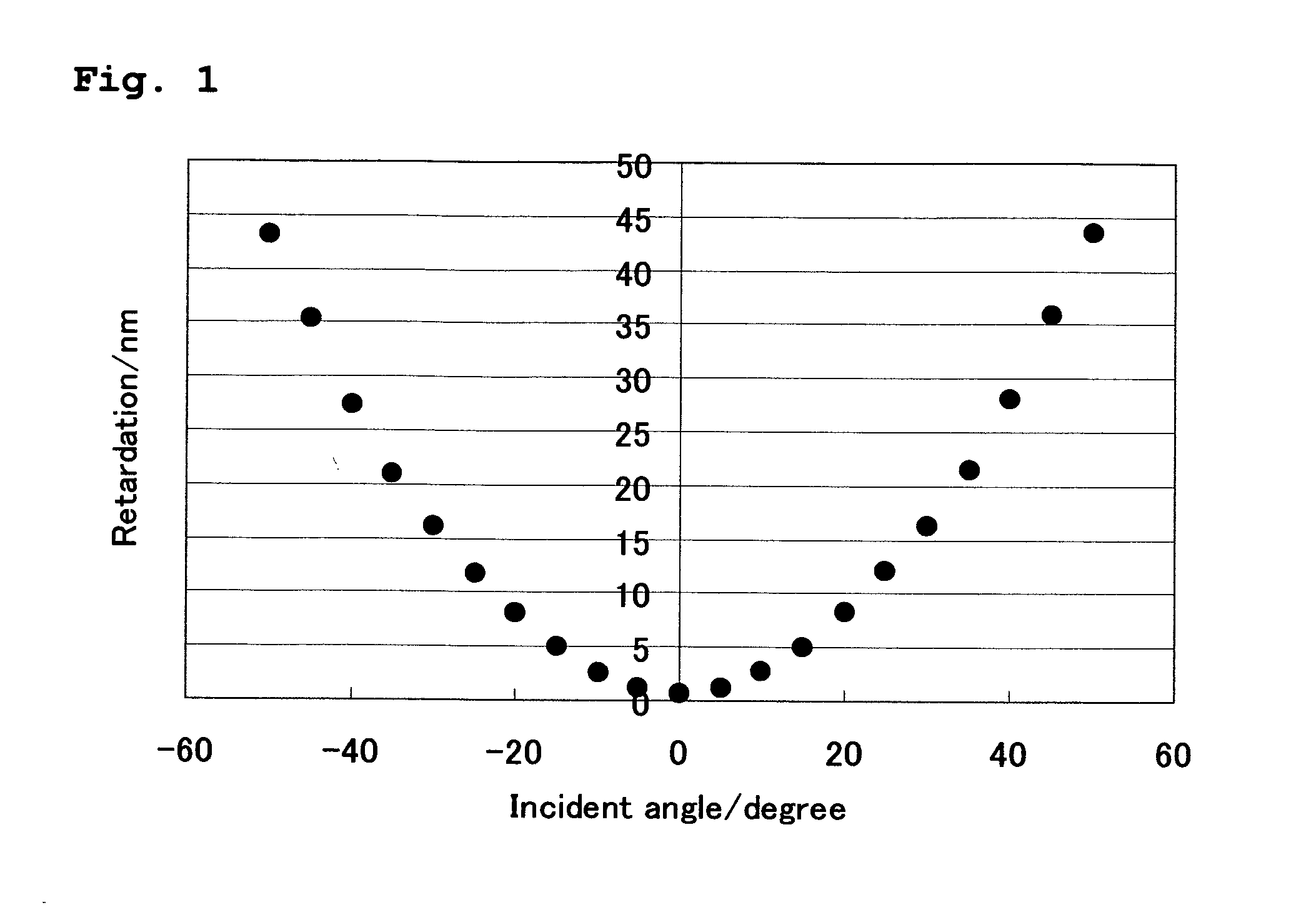Polymerizable liquid crystal composition and homeotropically-aligned liquid crystal film
a liquid crystal film and polymerizable technology, applied in the field of polymerizable liquid crystal composition, can solve the problems of difficult control of optical characteristics, difficult to form uniform homeotropic alignment, and insufficient function of one kind of polymerizable compound, so as to achieve effective control of birefringence and control of stability of homeotropic alignment sta
- Summary
- Abstract
- Description
- Claims
- Application Information
AI Technical Summary
Benefits of technology
Problems solved by technology
Method used
Image
Examples
example 1
[0202]The compounds (1-1-A2), (2-1-D2), (3-1-A2) and (4-1-A3) were mixed at a ratio (1-1-A2) / (2-1-D2) / (3-1-A2) / (4-1-A3)=40 / 10 / 25 / 25 by weight. The resulting mixture was designated as MIX 1. The compound (5-1-1) (SILA-ACE S-330, a trade name, available from Chisso Corporation) in a weight ratio of 0.10 and a polymerization initiator (Irgacure 907, a trade name, available from Ciba Japan Co., Ltd.) in a weight ratio of 0.03 were added to MIX 1. A mixed solvent of toluene and 2-propanol (toluene / 2-propanol=9 / 1 by weight) was added to the resulting composition to prepare a polymerizable liquid crystal composition (1) having a solvent ratio of 70% by weight.
[0203]An alignment agent for low pre-tilt angle (horizontal alignment mode) (Lixon Aligner PIA-5310, a trade name, available from Chisso Corporation) was coated on a glass substrate (S-1112, available from Matsunami Glass Industries, Ltd.), and after drying at 80° C. for 3 minutes, the coated film was baked at 210° C. for 30 minutes. ...
example 2
[0204]A liquid crystal film was formed in the same manner as in Example 1 except that a glass substrate was used as the supporting substrate, and a liquid crystal film having a uniform homeotropic alignment. The measurement of the retardation of the film provided results similar to FIG. 1.
example 3
[0205]The compounds (1-1-A2), (2-4-A1), (3-1-A2) and (4-1-A3) were mixed at a ratio (1-1-A2) / (2-4-A1) / (3-1-A2) / (4-1-A3)=40 / 10 / 25 / 25 by weight. The resulting mixture was designated as MIX 2. The compound (5-1-1) in a weight ratio of 0.10 and a polymerization initiator (Irgacure 907) in a weight ratio of 0.06 were added to MIX 2. A mixed solvent of methyl 3-methoxypropionate and propylene glycol monomethyl ether acetate (methyl 3-methoxypropionate / propylene glycol monomethyl ether acetate=1 / 1 by weight) was added to the resulting composition to prepare a polymerizable liquid crystal composition (2) having a solvent ratio of 80% by weight. A liquid crystal film having a uniform homeotropic alignment was obtained in the same manner as in Example 1 except that the polymerizable liquid crystal composition (2) was used and polymerized under air. The measurement of the retardation of the film provided results similar to FIG. 1.
PUM
| Property | Measurement | Unit |
|---|---|---|
| Percent by mass | aaaaa | aaaaa |
| Percent by mass | aaaaa | aaaaa |
| Percent by mass | aaaaa | aaaaa |
Abstract
Description
Claims
Application Information
 Login to View More
Login to View More - R&D
- Intellectual Property
- Life Sciences
- Materials
- Tech Scout
- Unparalleled Data Quality
- Higher Quality Content
- 60% Fewer Hallucinations
Browse by: Latest US Patents, China's latest patents, Technical Efficacy Thesaurus, Application Domain, Technology Topic, Popular Technical Reports.
© 2025 PatSnap. All rights reserved.Legal|Privacy policy|Modern Slavery Act Transparency Statement|Sitemap|About US| Contact US: help@patsnap.com



